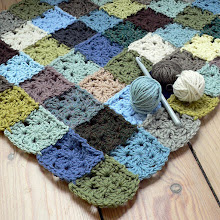
'Craftworkers adrift in the Ship of Fools' by Sebastian Brant 1494, featured in the preface to Jost Amman: Cuts of Craft-workers, a recent acquisition at Chetham's Library , where I am lucky enough to work on Wednesdays and Fridays. Each craftsman (it's a few hundred years until female emancipation) is identifiable by his tools, and you can see the lovely big scissors of the tailor (who looks a particular buffoon) in the middle boat.

Amman's wonderfully detailed woodcuts were originally published in his Standbuch of 1568, which attempted to offer 'an accurate description of all the classes on the earth'. This new edition, beautifully printed and hand bound by Graham and Kathy at Incline Press , features every imaginable sort of craftworker, from jewellers to tailors to blacksmiths and including this lovely scene of an embroiderer in his studio: notice his tasselled cushion, the skeins of thread and scissors, the abundance of light and fresh air, and the little cat sitting underneath the special table. I can't help thinking about the backache that would inevitably follow lengthy periods of sitting in such an awkward position, though.

My main job at the moment is to catalogue shelves and shelves full of horribly dirty and itchy books mainly dating from the seventeenth and eighteenth centuries. Being a bit of an anorak, I actually enjoy this, especially when we stumble across a volume previously owned by somebody a bit famous. We recently found a book of radical French political thought once owned by Laurence Sterne of Tristram Shandy fame, for example.
However, it's not all slogging away in front of the computer screen. Yesterday one of our oldest and most valuable manuscripts made a rare appearance in the reading room: the Flores Historiarum, or Flowers of History, a latin chronicle of British history written in the thirteenth century and interspersed with the most incredibly beautiful and detailed ink drawings of the coronations of the English monarchs. I had seen reproductions of these before, but never the originals, and I was blown away by the freshness of the colour and the tiny, intricate details. I was lucky enough to spend a very happy half-hour or so exclaiming over its gorgeous pages whilst its history was brought alive to me by my colleague Fergus, who knows about these things (and also makes excellent tea, excels in doing funny accents, and generally makes us all laugh).

Coronation of King Arthur, from "Flores Historiarum," by Matthew Paris, c.1250-52. This is just to give you an idea of how amazing these drawings are, and as usual it goes without saying that this image is copyright, this time of the Bridgeman Art Library, and shouldn't be used for anything other than marvelling at.









4 comments:
And there was me thinking you were going to show us pictures of the first addition of Tipbits
What an interesting job you have Sue.
I’m a glad that even in olde worldy woodcuts - a pre curser to the craft blog there is a cat looking cute in the artisans sewing nook.
I’ll show you my sewing hovel if you show me yours?
I love the details of the costumes. The embroiderer is wearing mules that could be seen in any bedroom today, and the clothes of the King and his courtiers look heavily embroidered. I like the King's red shoes - looks as though they were a kingly symbol!
It sounds such a lovely, calming place to work, Sue. Is there a vacancy?
Jo - it is a lovely place to work although I'm not sure about calming - too much swearing goes on for that...
Lynn - I know, I love the cat too. He looks well fed, probably all those visiting ladies bringing him scraps.
Mum - I covet those red shoes - I want a medieval embroiderer to make me some!
Post a Comment